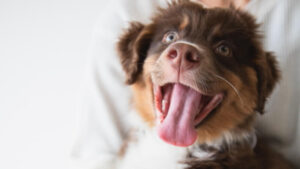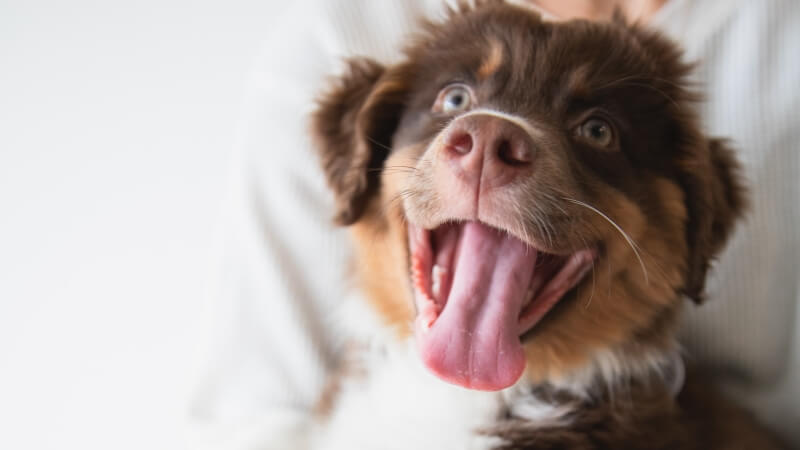
Dog Puzzle Feeder vs Interactive Toys: Which Is Best For Your Pooch?
Choosing the right plaything for your furry friend – be it a dog puzzle feeder or interactive toys – is essential for their mental and

Puzzle feeder is a fantastic way to add excitement and mental stimulation to your pet’s mealtime.
In this guide, we’ll walk you through creating a cardboard puzzle feeder, offering your furry friend a fun dining experience while challenging their intelligence.
Before we delve into crafting the puzzle feeder, let’s take a moment to understand why mental stimulation is crucial for our pets.
While physical exercise is vital for keeping your pet healthy, mental exercise is equally important. Dogs and cats are intelligent creatures that thrive on mental challenges. Without these challenges, they may become bored or develop behavioral problems.
Mental stimulation can help:
A puzzle feeder is not just a means of providing food; it’s a mental exercise that can engage your pet’s brain and keep them entertained. Here’s how it works:
Now that we understand the importance of puzzle feeders let’s gather the materials and get started on creating one.
Let’s kick off our puzzle feeder project by ensuring you have all the necessary materials and tools at your disposal.
Cardboard is an excellent material for crafting a puzzle feeder for several reasons:
Here are the materials and tools you’ll need:
Creating a puzzle feeder may sound complex, but fear not! We’ll guide you through the process step by step, making it a fun and rewarding DIY project.
Every great creation starts with a plan. Before you dive into cutting cardboard, take a moment to sketch out your puzzle feeder’s design on a piece of paper. This will serve as your blueprint, helping you visualize the end result and make necessary adjustments before crafting.
Consider the following when planning your design:
Once you have a clear plan, you’re ready to move on to the next step.
With your design in hand, it’s time to start cutting and shaping the cardboard pieces according to your plan. Depending on your chosen design, you may need to cut slots, create compartments, or construct tunnels.
Here are some tips for this stage:
While decorating your puzzle feeder is optional, it can add a personal and fun touch to the project. Get creative with markers, paint, stickers, or any other decorative materials you have on hand.
Here are some decorating ideas:
Now comes the fun part—putting it all together! Assemble the cardboard pieces according to your design, using non-toxic glue sparingly to ensure everything stays securely in place. Follow these steps:
Before introducing your puzzle feeder to your pet, give it a final inspection. This is a crucial step to ensure there are no loose parts or potential safety hazards.
Run your fingers along the seams and joints to check for any rough edges or protruding pieces. Smooth out any imperfections to prevent injury to your pet.
Congratulations! You’ve successfully crafted your very own puzzle feeder from cardboard. Now, it’s time to move on to the exciting part—watching your pet enjoy it.
A puzzle feeder’s effectiveness lies in its ability to challenge your pet’s mind. Let’s explore how to make it even more engaging.
Your pet enjoys a good puzzle, and your cardboard creation can provide just that. Here are a few ways to increase the complexity:
Place treats or kibble inside the feeder, hiding them behind flaps or within compartments. Your pet will need to figure out how to access the rewards. This not only provides mental stimulation but also encourages their sense of smell.
Create a maze within the feeder with twists and turns that require your pet to maneuver treats to the exit. This adds an extra layer of complexity to the puzzle, keeping your pet engaged for longer periods.
Incorporate spinning or rotating elements that your pet must manipulate to access the treats. This adds a physical aspect to the mental challenge, requiring coordination and problem-solving.
By adding these challenges, you’re turning mealtime into an engaging mental workout. Not only will your pet enjoy the reward, but they’ll also relish the process of problem-solving. Keep an eye on your pet as they interact with the puzzle feeder to ensure they’re engaged and not frustrated.
Now that your puzzle feeder is ready, it’s time to put it into action. Learn how to introduce it to your pet and keep it in top-notch condition for continued enjoyment.
When you introduce the new puzzle feeder, your pet might be curious or even a bit puzzled. Here’s how to make mealtime an adventure:
By making mealtime an adventure, you’re turning a routine task into a stimulating challenge. Your pet will eagerly anticipate their meals, which is a win for both their mental and physical well-being.
Maintaining hygiene is essential. Find out how to clean and sanitize your puzzle feeder to keep it safe for your pet.
A clean puzzle feeder is a happy and healthy one. Ensure your pet’s safety and enjoyment by following our easy maintenance tips.
Pets have unique preferences and abilities. Explore how to customize your puzzle feeder based on your pet’s personality and needs.
Whether your pet prefers a simple, straightforward challenge or a mind-boggling puzzle, you can tailor your creation to match their personality and needs. The possibilities are endless, so let your creativity shine!
Crafting a cardboard puzzle feeder is a rewarding way to stimulate your pet’s mind during meals.
By investing time and creativity into this DIY project, you not only provide mental enrichment but also strengthen your bond with your furry companion.
So, start crafting today, and watch your pet enjoy the delightful puzzles during mealtime. Happy crafting!


Choosing the right plaything for your furry friend – be it a dog puzzle feeder or interactive toys – is essential for their mental and

Wondering if a puzzle feeder could revolutionize your pet’s mealtime into an exciting challenge? This unique device promises to engage your furry friend both mentally

For passionate pet enthusiasts, a puzzle feeder is more than just a toy; it’s a critical tool for mental stimulation and dietary control for their

Are you ready to dive deeper into the world of puzzle feeder and embark on a journey to ensure your furry friends remain mentally stimulated?

Choosing the right plaything for your furry friend – be it a dog puzzle feeder or interactive toys – is essential for their mental and

Wondering if a puzzle feeder could revolutionize your pet’s mealtime into an exciting challenge? This unique device promises to engage your furry friend both mentally

For passionate pet enthusiasts, a puzzle feeder is more than just a toy; it’s a critical tool for mental stimulation and dietary control for their

Are you ready to dive deeper into the world of puzzle feeder and embark on a journey to ensure your furry friends remain mentally stimulated?
Copyright © 2024 puppypuzzlefeeder. All Rights Reserved.